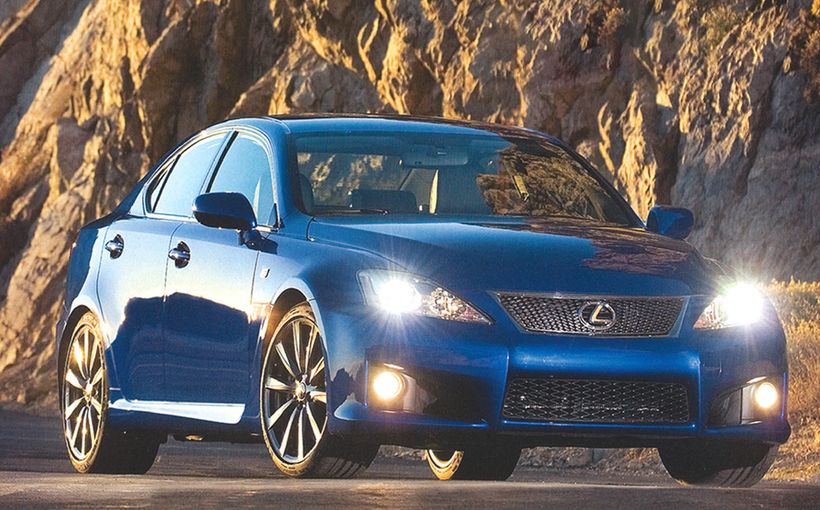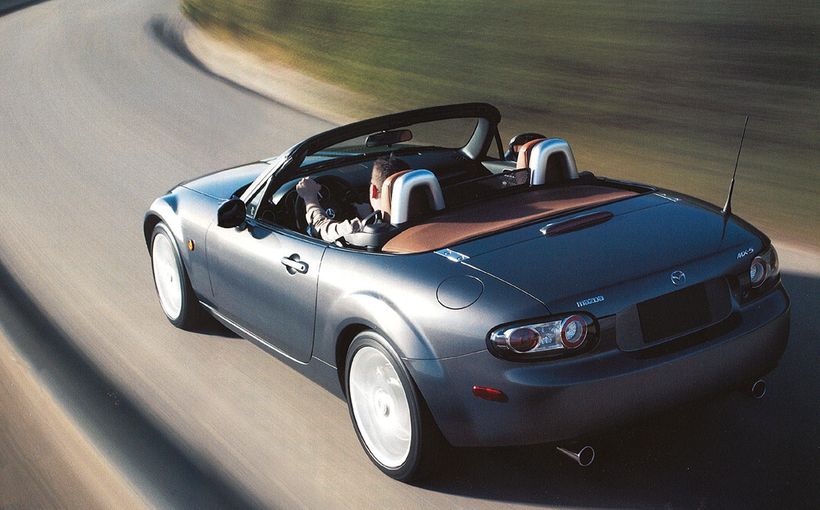2005 Range Rover Sport: Time Lord

WORDS GED BULMER
CARVING up stages of the Rallye de Catalunya is something many a would be world rally ace has dreamed of during a PlayStation fang-fest.
With the soaring Pyrenees mountains as a backdrop, on the very roads where Spanish rally great Carlos Sainz made his name, the narrow and unforgiving ribbons of blistered bitumen make for immensely entertaining real-world driving.
We're high up on the flanks of these intimidating hills, hammering from corner to corner, clipping apexes, charging in late under brakes and sawing hard on an oversized wheel. The wretched sound of tortured rubber echoes off the hillsides, the supercharged V8 bellows melodramatically, and great chunks of grit and tar burst out behind us as if shot from a cannon.
We could be, should be, here in something small, lithe and nimble - something that links corners with the sort of elasticity and fast-forward rush of a Lancia Delta Integrale or works Quattro. Instead, we're in a truck. And the Range Rover Sport simply shouldn't be handling these roads as if it were born to them.
Of course, there will be those who'd suggest that calling any Range Rover a truck, let alone this latest high-performance incarnation, is doing the marque severe injustice. But, at almost five metres long, two metres tall and weighing 2.5 tonnes, let's call a spade a spade here. Nevertheless, on the rally roads of Spain, the Rangie Sport has proved once again that categorising a vehicle in the modern era is far from easy.
In off-road terms it seems that Range Rover has always been there, with its unique combination of syrupy V8 power, supple, long-legged suspension and rarely rivalled rough-terrain ability. But the game changed forever in 2000 when BMW launched the X5, instantly remapping our mental circuits on how weighty 4WDs should go, stop and steer.
Despite being the original luxury SUV, and despite bringing an all-new, brilliantly executed model to market in 2002, Range Rover has ceded a significant share of a market sector it once virtually owned. The Sport has been created to help the marque reclaim its place in that game.

The Sport features three engines across more or less one spec level, although the top-of-the-line variant brings some extras not found on the rest of the range. The models are specifically targeted to square up against Land Rover's German rivals and, in good old Brit fashion, to hit 'em where it hurts. As such, the diesel version of the Sport goes head-to-head with the X5 3.0-litre diesel, the V8 likewise with BMW's 4.4-litre V8, and the supercharged variant takes on the potent X5 4.8is.
Despite sharing its famous name, there's no mistaking the Range Rover Sport for its larger, more formal-looking grand daddy. The Sport is shorter in the wheelbase and more aggressive looking, with a swept back windscreen, lower roofline and more acutely angled rear pillars.
While the Sport is actually based on the new Discovery 3 platform, there are clear Range Rover influences in the styling, via familiar cues such as the clamshell bonnet, floating roofline and those angled C-Pillars. The Supercharged version is further differentiated by its drilled, three-blade grille, bespoke 20-inch alloy wheels (others wear 17s, 18s or optional 19s), pronounced, chrome-tipped exhausts, and a supercharged badge on its rump.
The Sport rides on huge 275/40R20 Continental 4x4 Sportcontact tyres, with other models on more modest 17- or 18-inch rubber. Higher-spec four-piston Brembo front brakes are standard on the supercharged car, but they act on the same 337mm front and 350mm rear drilled-and-ventilated discs as fitted to the standard V8.
Intriguingly, as with Discovery 3, Rangie Sport is neither a separate chassis nor a monocoque, but rather a combination of the two structures that Land Rover calls Integrated Body Frame.
But the Sport sits on a wheelbase that's 140mm shorter than Discovery, designed to improve agility. Suspension is fully independent by double wishbones, with electronically controlled air springs. A key difference between the supercharged version and other models, however, is Land Rover's Dynamic Response active sway-bar system. Standard on the supercharged model and optional on others, this computerised anti-roll system uses hydraulic motors acting on the sway bars to reduce body-roll during cornering.

A side benefit of Dynamic Response is improved ride quality, to the extent that the difference in ride between the 19-inch-wheeled V8 and the 20-inch-wheeled Supercharged V8 is not that glaring. Though tied down firmly, the Sport's air suspension ensures a compliant ride in all but the roughest off-road conditions.
It's particularly adept at handling large, smooth dips and bumps, less so with short, sharp lumps and potholes. Neither model, however, rides as well as the truly plush Discovery 3, but they're far less brutal than the teeth-rattling Porsche Cayenne.
Steering is a ZF Servotronic rack-and-pinion unit, with speed-proportional, variable-ratio power assistance. Travelling quickly on narrow, tree-lined rural roads near Perpignon in France, I found myself chasing the wheel a little. This slight off-centre vagueness, combined with a degree of suspension 'float' over undulations, and some body movement, adds up to a lingering sense of imprecision. Fortunately, the problem is not so evident on freeways and smoother roads, where the car feels more settled. It's probably fair to say, however, that the Sport doesn't have the on-centre response and steering feel of the X5.
The eight cylinder engines are characterised by a brawny, old-school V8 burble that remains a constant, pleasurable travelling companion.

Audible supercharger whine accompanies progress in the blown V8, which delivers the sort of storming performance that makes you question if this really is a 2.5-tonne SUV you're pedalling.
It's not the sort of epic, dimension-squashing thrust of a Cayenne Turbo, but it's not hanging around, either, with a claimed 0-100km/h time of 7.6sec and a top speed of 225km/h. By comparison, the 220kW and 425Nm naturally aspirated V8 gives away a full 1.3 seconds to 100km/h and tops out at 209km/h. That said, it's certainly no slouch and most buyers will find its performance brisk enough.
Throttle response in both is impressively snappy, with drive channelled through the hugely impressive six-speed ZF adaptive auto that's become the gold-standard of modern autos, and a full-time 4WD system.
The auto is intuitive enough at adapting to different driving conditions that you really don't need to bother shifting it manually - which is just as well given the absence of a paddleshift option and the awkward positioning of the gear lever.
The interior feels less upmarket than the Range Rover, with some of the plastics, especially around the A-pillar and speaker surrounds, looking a bit downmarket. It's also not as roomy, and you tend to feel a bit funnelled in by the substantial centre console and transmission tunnel that bisects the cabin. Rear-seat accommodation is respectable, but nowhere near as good as Discovery for headroom and seat comfort.

Of course, while BMW may have beaten Range Rover to the on-road side of this equation, it's Land Rover that has the off-road pedigree. Question is, does that count for anything at all in this category? Apparently not, if the X5's success is anything to judge by.
Nevertheless, as was ably demonstrated in two short, but reasonably demanding, off-road sections in the forests and hills of Catalunya, Land Rover has endowed the Sport with truly impressive off-road ability.
But where Land Rover was once happy to hang its hat on off-road capability, the company these days talks about "breadth of capability", meaning it wants owners to believe it builds cars as good on road as they are off it. In this regard the Sport succeeds in forging new ground for the marque, delivering levels of performance and on-road dynamics hitherto unseen in the brand.
Having just launched an expensive new Discovery range, and pushed Range Rover further upmarket, Land Rover intends for Sport to bridge the brands. Though pricing is not finalised, the line-up is expected to start at $85,000 for the V6 diesel, rise to $105,000 for the atmo V8, and top out at $140,000 for the supercharged V8.
The Sport is not the lean, mean sports machine Land Rover's ads would have you believe. It doesn't have the outright hoof of a Cayenne Turbo, or by our reckoning the dynamic measure of an X5. But it's very competitive in each of these areas, while retaining Land Rover's famed aura of off-road competency.
Bottom line, it's well within the ballpark, meaning game-on for X5 and Co.

RANGE ROVER SPORT S'CHARGED
www.landrover.com.au
Body steel/aluminium, 5 doors, 5 seats Drivetrain front engine (north-south);
all drive
Engine 4197cc V8, dohc, 32v, supercharger
Power 287kW @ 5750rpm
Torque 550Nm @ 3500rpm
Transmission 6-speed automatic
Size I/w/h 4798/1928/1817mm
Wheelbase 2745mm
Weight 2572kg
0-100km/h 7.6sec (claimed)
Price $140,000 (estimated)
On sale September 2005

Protect your Classic. Call Shannons Insurance on 13 46 46 to get a quote today.








